Abstract
1. The locations of the receptor endings of twenty-two phasic, primary afferent units which could be excited by small (less than 40 μm) point displacements of cats' large foot pads have been determined by dissection.
2. Eleven of these units had endings located within or immediately below the skin on the plantar surface of the pad; eight had endings located deep within the pad and three had endings on the digits.
3. All the deep and digital endings were of the PC type of Jänig, Schmidt & Zimmermann (1968) whilst five of the superficial endings were definitely of the RA type of Jänig et al. (1968), and another five could have been. One superficial ending had properties intermediate between those of RA and PC receptors.
4. It was shown by dissection that the endings of four of the PC type units were Pacinian corpuscles and such corpuscles were seen within 1 mm of the apparent location of six other PC receptors. Pacinian corpuscles were found close to only two of the eleven superficial receptor locations.
5. It is therefore concluded that of the two functionally distinct types of phasic receptors studied, the PC receptors are Pacinian corpuscles located deep in the pad or on the digits, whilst the RA receptors are located within or immediately below the skin and are not Pacinian corpuscles.
Full text
PDF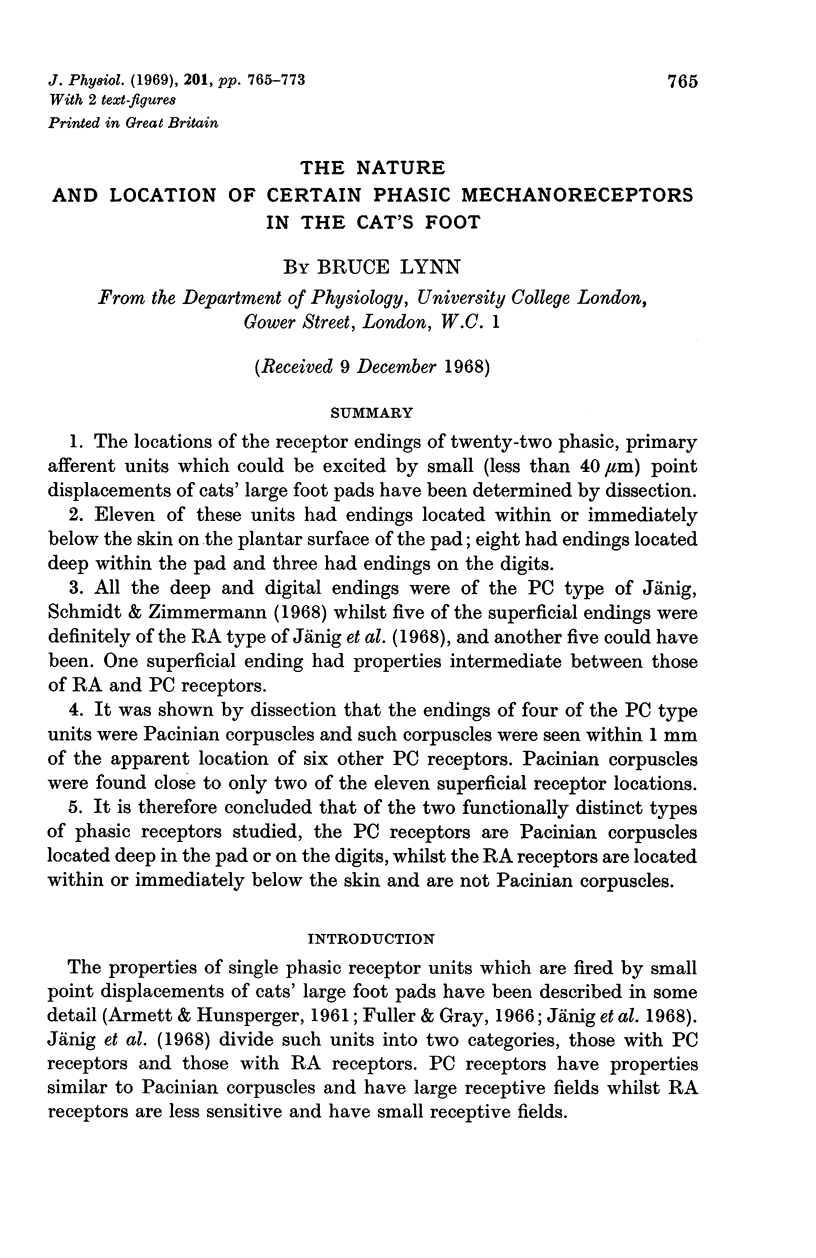
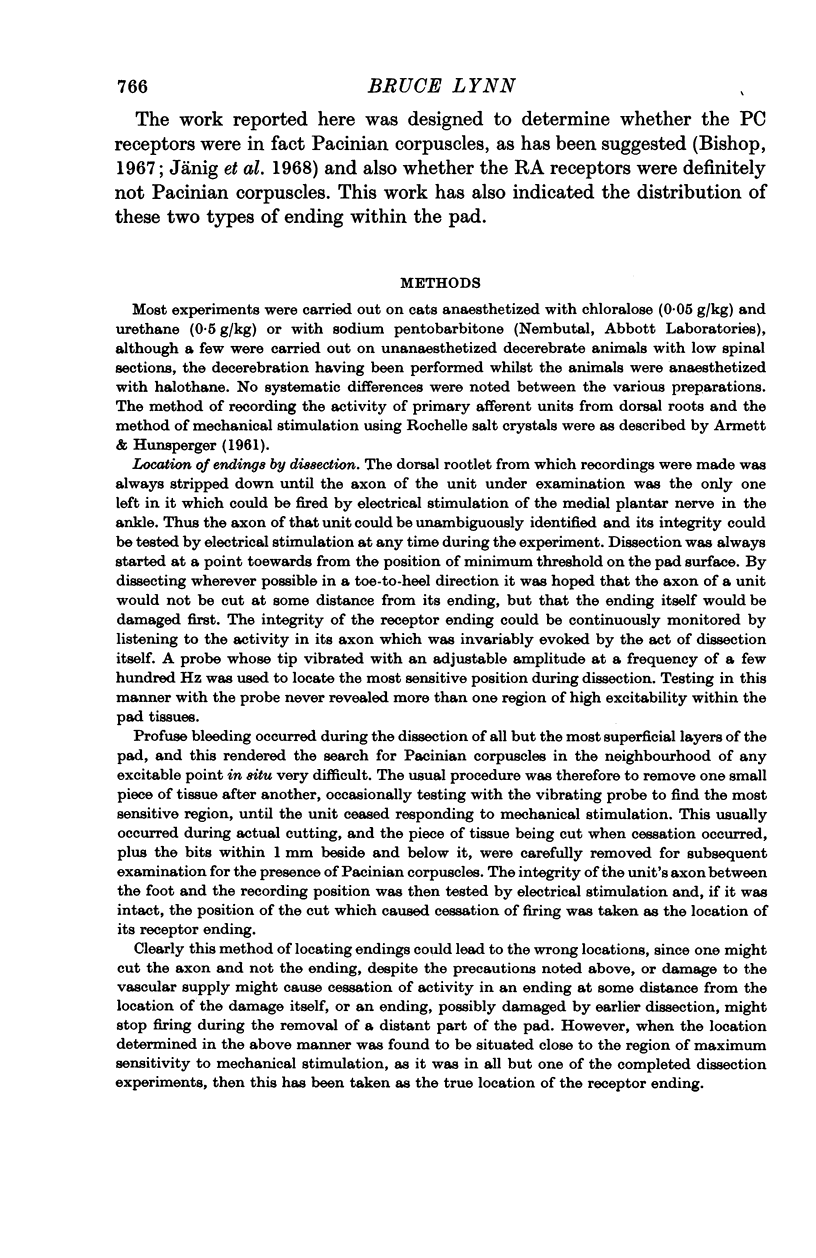
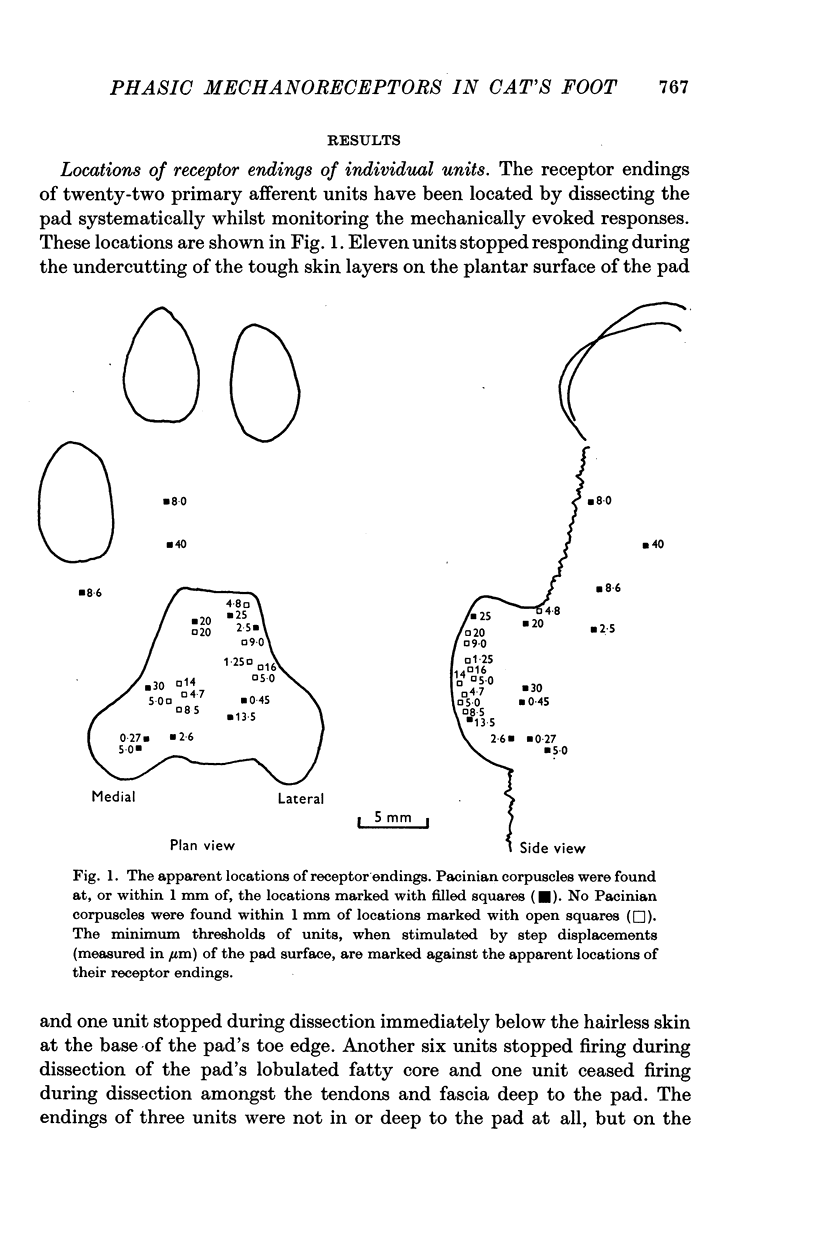
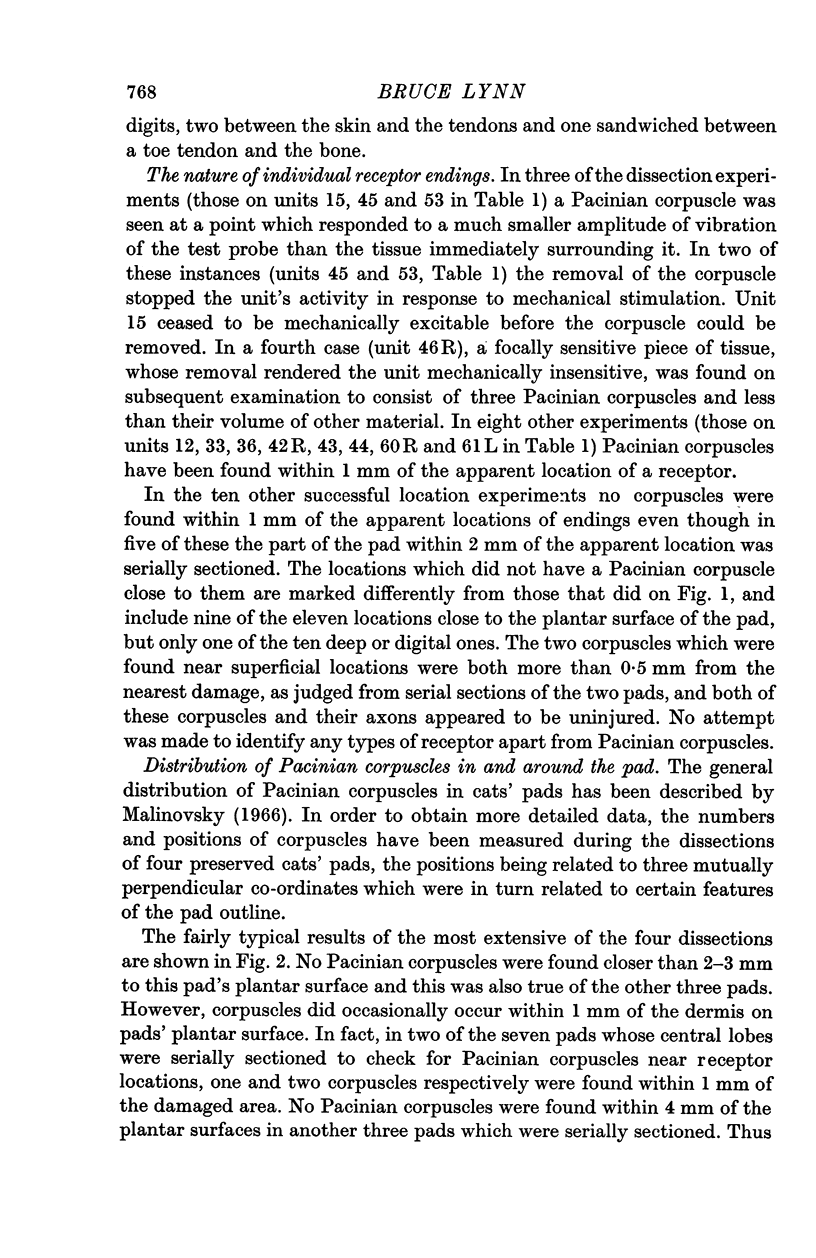
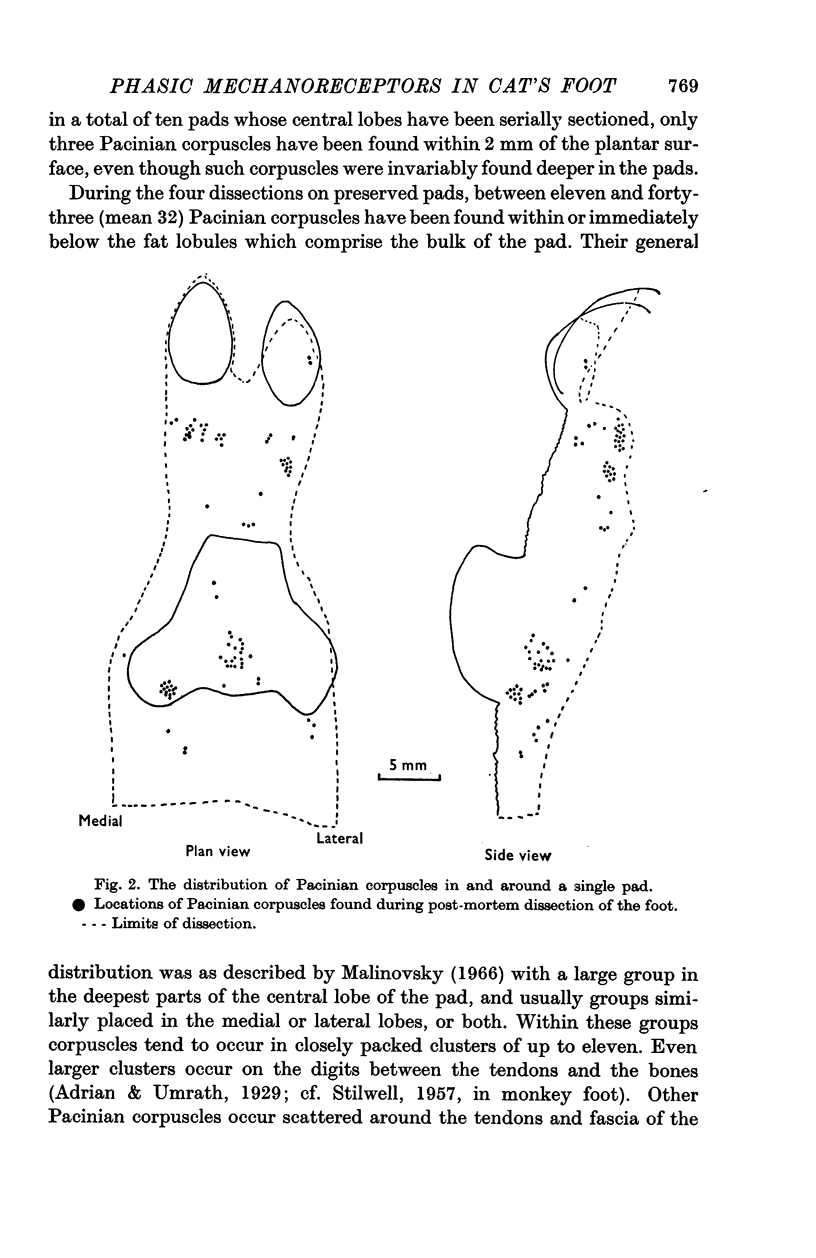
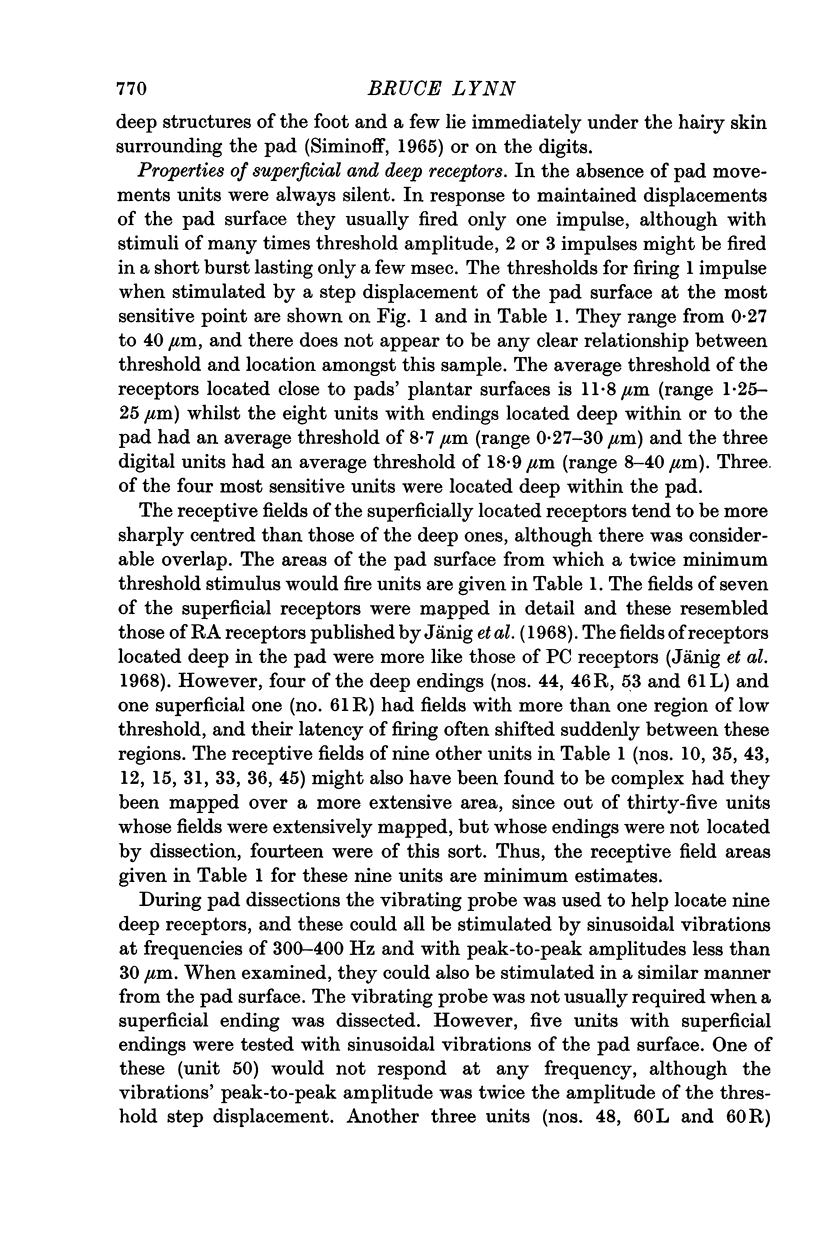
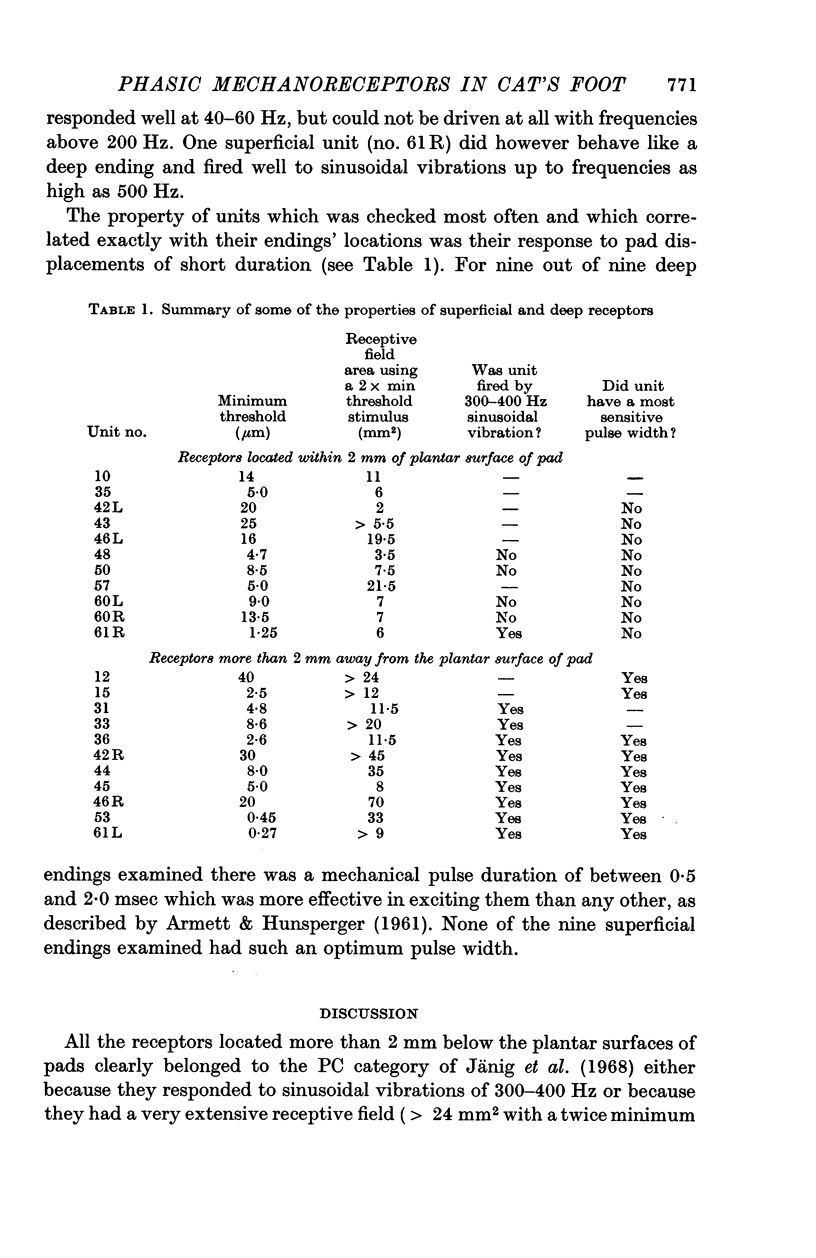
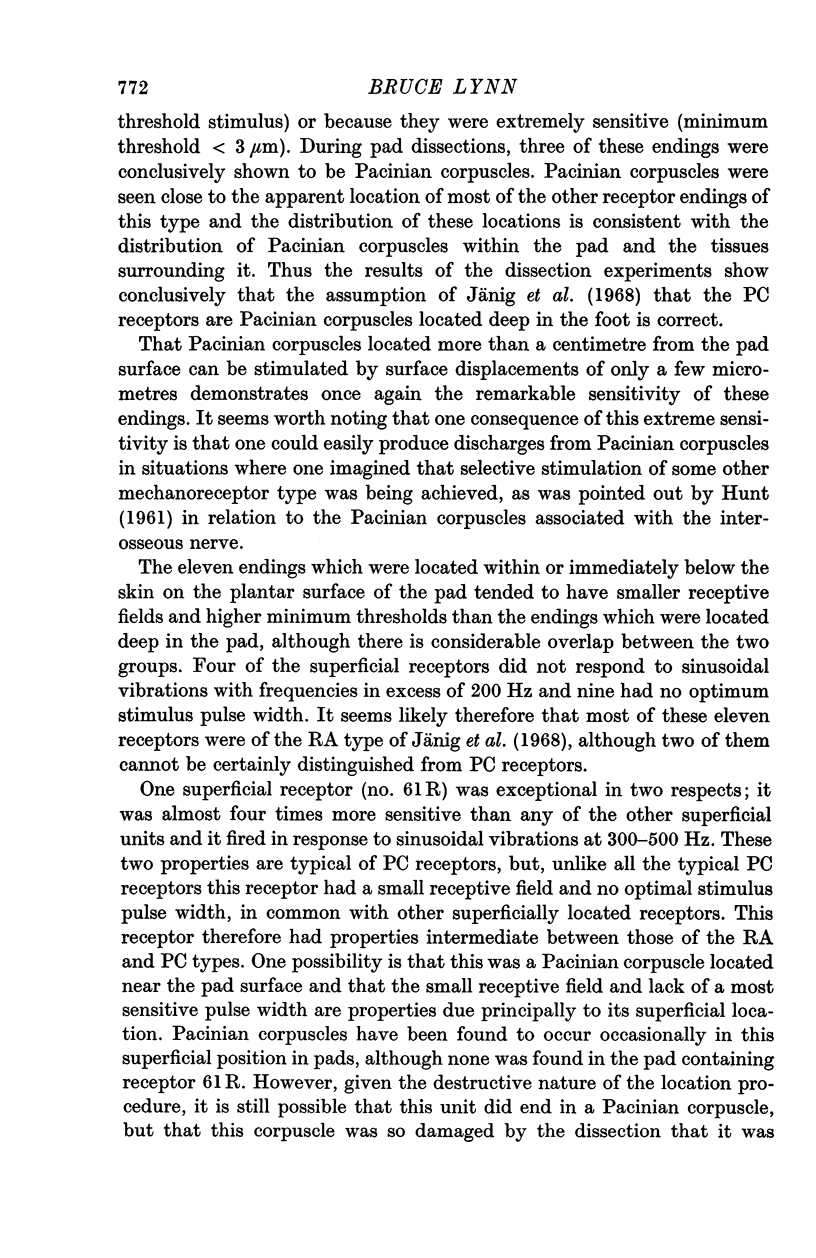
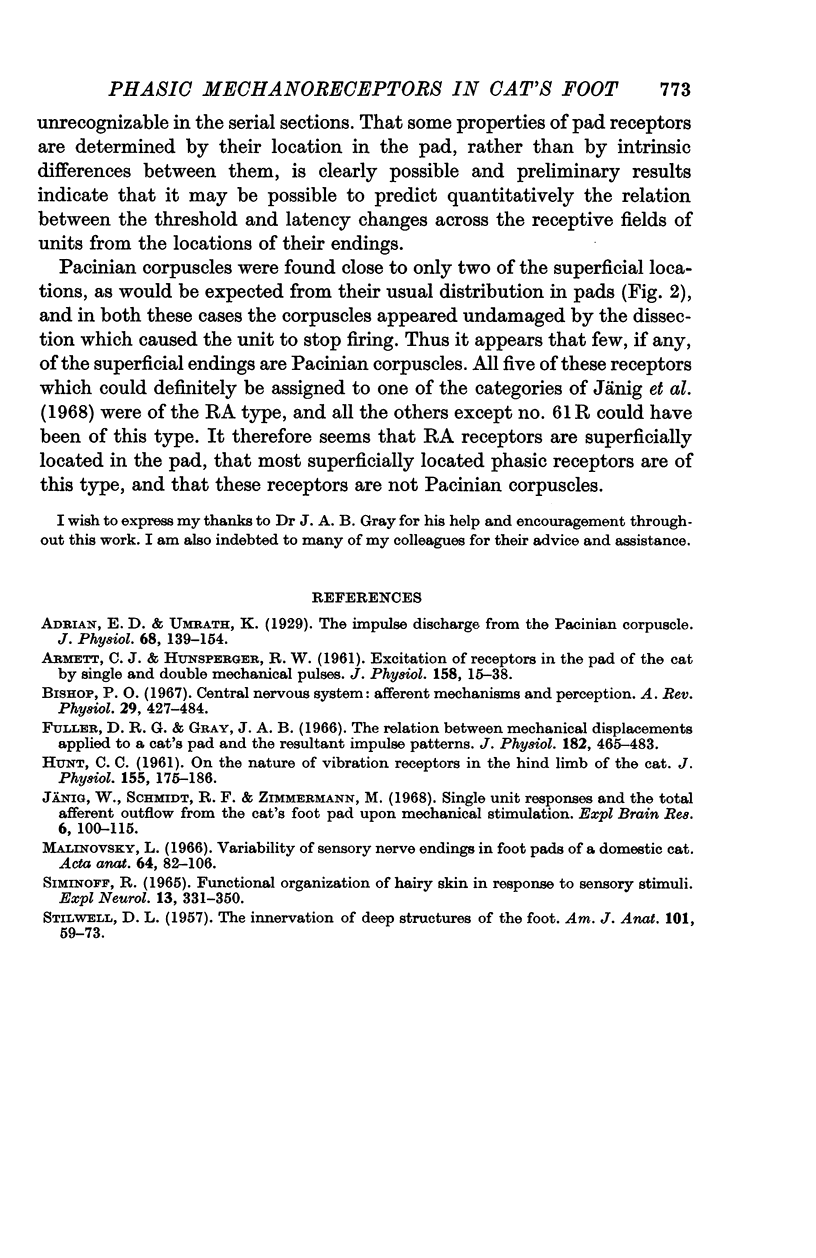
Selected References
These references are in PubMed. This may not be the complete list of references from this article.
- ARMETT C. J., HUNSPERGER R. W. Excitation of receptors in the pad of the cat by single and double mechanical pulses. J Physiol. 1961 Sep;158:15–38. doi: 10.1113/jphysiol.1961.sp006751. [DOI] [PMC free article] [PubMed] [Google Scholar]
- Adrian E. D., Umrath K. The impulse discharge from the pacinian corpuscle. J Physiol. 1929 Oct 23;68(2):139–154. doi: 10.1113/jphysiol.1929.sp002601. [DOI] [PMC free article] [PubMed] [Google Scholar]
- Bishop P. O. Central nervous system: afferent mechanisms and perception. Annu Rev Physiol. 1967;29:427–484. doi: 10.1146/annurev.ph.29.030167.002235. [DOI] [PubMed] [Google Scholar]
- Fuller D. R., Gray J. A. The relation between mechanical displacements applied to a cat's pad and the resultant impulse patterns. J Physiol. 1966 Feb;182(3):465–483. doi: 10.1113/jphysiol.1966.sp007832. [DOI] [PMC free article] [PubMed] [Google Scholar]
- HUNT C. C. On the nature of vibration receptors in the hind limb of the cat. J Physiol. 1961 Jan;155:175–186. doi: 10.1113/jphysiol.1961.sp006621. [DOI] [PMC free article] [PubMed] [Google Scholar]
- Jänig W., Schmidt R. F., Zimmermann M. Single unit responses and the total afferent outflow from the cat's foot pad upon mechanical stimulation. Exp Brain Res. 1968;6(2):100–115. doi: 10.1007/BF00239165. [DOI] [PubMed] [Google Scholar]
- STILWELL D. L., Jr The innervation of deep structures of the foot. Am J Anat. 1957 Jul;101(1):59–73. doi: 10.1002/aja.1001010104. [DOI] [PubMed] [Google Scholar]
- Siminoff R. Functional organization of hairy skin in response to sensory stimuli. Exp Neurol. 1965 Dec;13(4):331–350. doi: 10.1016/0014-4886(65)90123-8. [DOI] [PubMed] [Google Scholar]


